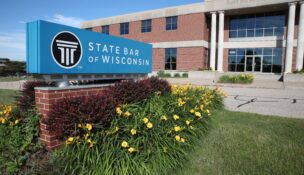Set the stage now for business development success
By: Bridgetower Media Newswires//February 22, 2017//
Set the stage now for business development success
By: Bridgetower Media Newswires//February 22, 2017//
By John F. Reed
BridgeTower Media Newswires
With almost two months of 2017 behind us, there is no time like the present for lawyers to be working on their business-development plans. Whether you commit to a formal marketing plan or not, there are a few steps you can take now to make sure you have hit the ground running.
Know and promote your brand
Although all lawyers have brands, few evaluate, reshape and strategically communicate them. Start by asking yourself, “What do I want to be known and valued for?” and “What do I want clients to trust me to do for them?” Then write a one-sentence summary starting with the words “I help” followed by a brief description of your target audience and your particular abilities, talents and style.
Next, take an inventory of your online and offline presence to ensure you are promoting yourself accurately and in ways that will attract new clients and referral sources. You should, for example:
Review your website bio, firm brochures and marketing pieces to confirm not only that the wording is correct but that it differentiates you from the competition.
- Google yourself (and lawyers you consider to be leaders in your practice area or location) and take note of the page-one search results as well as descriptions on LinkedIn, Facebook, Martindale.com, Lawyers.com, Findlaw, Avvo, bar association directories, and other listings.
- If your information is outdated or bland, you risk having your next best client pass you by. Research shows that regardless of whether a prospect is a consumer, business owner or general counsel, that person is almost certain to look at law firms’ websites and LinkedIn profiles to get an initial impression or vet a referral from a friend, relative or colleague.
Reconsider your business development goals
All too often, attorneys gauge the effectiveness of their business-development efforts by origination, billables and financial yardsticks. Though these measures are important (after all, dollars keep the law firm’s doors open), they shouldn’t be the only benchmarks. If existing and prospective clients and referral sources don’t think of you first or at all when a legal need arises, whatever revenue projections you might have attached to them become worthless.
Awareness is essential, so place relationship-building activities at the top of your business-development goals:
- Establish a daily regimen of reaching out to a reasonable number of strategic connections every day, and don’t start working or leave the office until you do.
- Make it easy by creating a go-to list of options for how to get in touch with those people (whether it be by phone, email, LinkedIn invitations, etc.) and a specific reason for contacting them (discuss an issue, ask a question, share an article, offer a referral, etc.).
- Rather than paying attention solely to outcomes such as meetings, lunches, after-hour drinks, or golf outings, concentrate on daily activity and meaningful conversations. If you pay attention and listen for cues, you will find reasons for subsequent meetings and discussions, allowing you to uncover needs, convey your knowledge and generate work.
Take your client’s temperature
The old adage that it’s easier to keep a client than bring in a new one has never been more true. Doing good work may have been enough to earn client loyalty in the past, but lawyers today need to know more and do more for clients to keep them close.
If you rely on repeat business from a portfolio of clients, in-person, on-site reviews provide an excellent opportunity to talk to them about:
- The work you’ve done recently and over the course of the year.
- The client’s view of the service you provide, what they consider to be best practices (yours and other law firms’ they engage), and ways they feel you can increase your value.
- What’s on clients’ horizon and their anticipated needs — legal, business, and personal — in 2017 and beyond.
- The “review” part of the meeting — what you’ve done for the client lately — should be the shortest part of the meeting. The other parts are more important because they demonstrate your interest in improving the relationship and forming a broader, more informed perspective of the client’s world.
Now is an opportune time to contact clients to schedule reviews. If they are available to meet before the end of the year, great, but if not, press to get a date on the calendar as soon as possible. And if clients are across the state or in another part of the country, hop on a plane or get in your car and go to them. You cannot establish the rapport you want over the phone.
Dust off — or tear up — your business development plan
Let’s look at a law firm that requires partners and associates to submit annual business plans. With the use of a pro forma MS Word document, lawyers are asked to list their top 10 clients and prospects and revenue forecasts for each of them, their “best” referral sources, and the bar and professional organizations they belong to, their level of participation, and the expected work that these memberships will generate.
Every January, the typical lawyer opens the file, changes some dollar figures, substitutes a few names on various lists, saves the file and sends it on. The plan sits idle until a performance or compensation review in December and then the process is repeated a month later.
Sound familiar? If so, reconsider the content and value of the plan:
- Business plans are only useful if regularly consulted, assessed and revised all year long, so print and place them front and center on your desk, pinned to your wall or taped to your computer. Coffee rings, handwritten notes and scribbles are encouraged.
- Like yes-or-no questions, fill-in-the-blank templates elicit short, less meaningful answers than open-ended questions that invite thoughtful, qualitative responses. How the plan is worded and formatted will drive the actions and behaviors you want.
- Find ways to make your plan live and breathe. If you’re an Excel expert, convert your plan into a spreadsheet and schedule time each week to review the file and keep it current. If you manage your daily life in Outlook, Gmail and Apple Mail, manage your activities there as well. If you are addicted to sticky notes, tack as many to your wall as you need to stay on top of your business-development efforts.
- Too often, a lawyer will say that he is too busy to do business development, or conveniently assure herself that her clients know to call if they need anything. Competition for legal services these days is cutthroat, and that kind of thinking and inactivity can have disastrous results. Now that 2016 is in the rearview mirror, now couldn’t be a better time to take a fresh look at the way you go about marketing and your plans for developing your business in 2017.
John F. Reed is the founder of Rain BDM, a business development and marketing consultancy company that helps law firms of all sizes build client relationships. Working with clients across the country, he trains and coaches attorneys in client development and social media.
Legal News
- Former law enforcement praise state’s response brief in Steven Avery case
- Eric Toney announces re-election bid for Fond du Lac County District Attorney
- Former Wisconsin Democratic Rep. Peter Barca announces new bid for Congress
- Republicans file lawsuit challenging Evers’s partial vetoes to literacy bill
- More human remains believed those of missing woman wash up on Milwaukee Co. beach
- Vice President Harris returning to Wisconsin for third visit this year
- Wisconsin joins Feds, dozens of states to hold airlines accountable for bad behavior
- Trump ahead of Biden in new Marquette poll
- Bankruptcy court approves Milwaukee Marriott Downtown ‘business as usual’ motion
- New Crime Gun Intelligence Center to launch in Chicago
- Arrest warrant proposed for Minocqua Brewing owner who filed Lawsuit against Town of Minocqua
- Wisconsin Supreme Court justices question how much power Legislature should have
WLJ People
- Power 30 Personal Injury Attorneys – Russell Nicolet
- Power 30 Personal Injury Attorneys – Benjamin Nicolet
- Power 30 Personal Injury Attorneys – Dustin T. Woehl
- Power 30 Personal Injury Attorneys – Katherine Metzger
- Power 30 Personal Injury Attorneys – Joseph Ryan
- Power 30 Personal Injury Attorneys – James M. Ryan
- Power 30 Personal Injury Attorneys – Dana Wachs
- Power 30 Personal Injury Attorneys – Mark L. Thomsen
- Power 30 Personal Injury Attorneys – Matthew Lein
- Power 30 Personal Injury Attorneys – Jeffrey A. Pitman
- Power 30 Personal Injury Attorneys – William Pemberton
- Power 30 Personal Injury Attorneys – Howard S. Sicula











